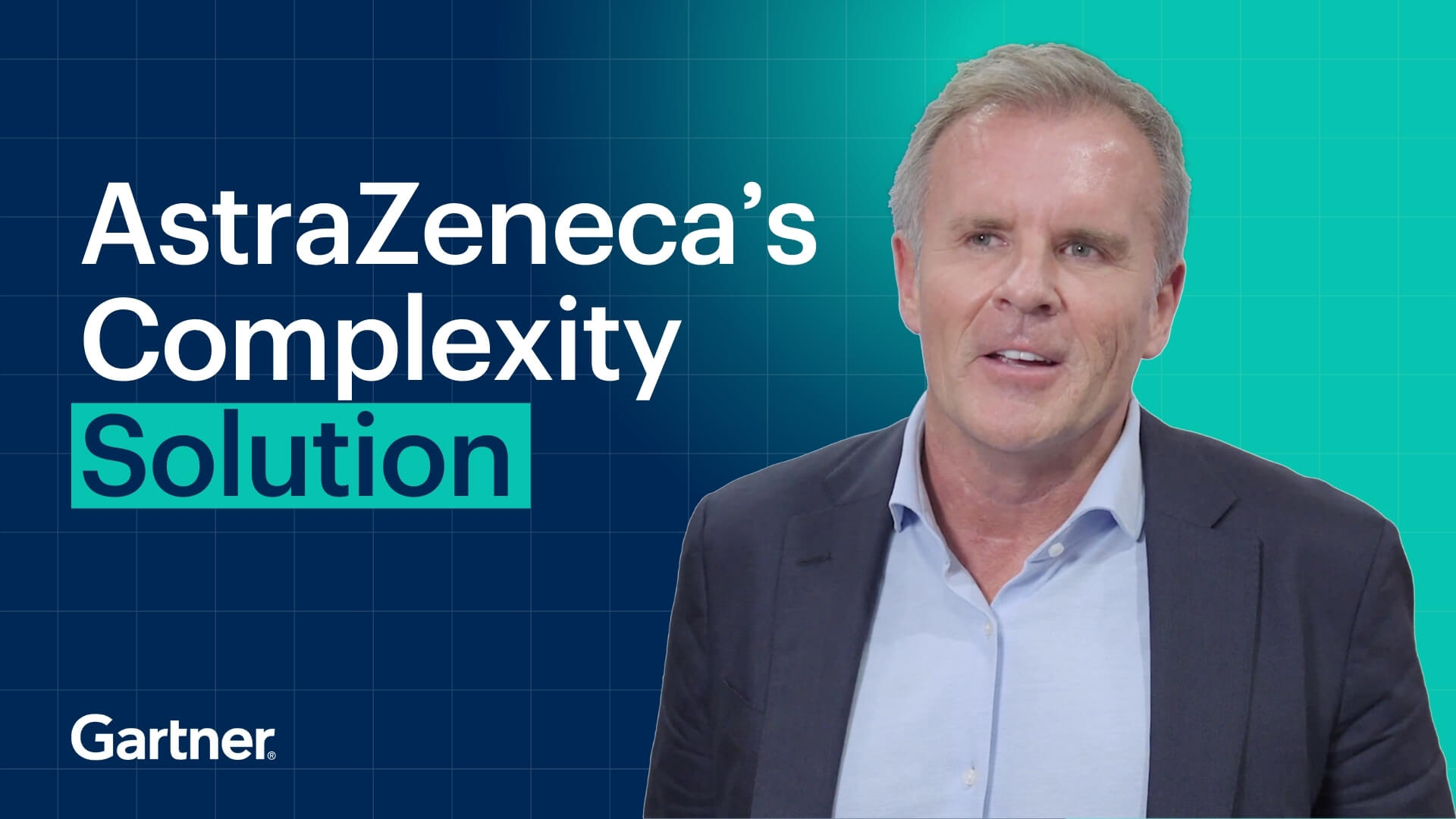Wayne Filin-Matthews, Global Head of Enterprise Architecture at AstraZeneca
I’m the Chief Architect responsible for about 112 architects across our 176 geographies that we operate in today, so broad and wide. I’ve been in the IT industry for about 38 years, so I’ve been working with Gartner for that 38 years, which has been great.
What challenges are currently top of mind for your organization?
I have this saying which is, you know, “everything changes but nothing changes.” And we’re still trying to do the same things as when I started in technology working in investment banking, which is outcomes-driven, putting the customer at the center of the technology decision making. Nothing’s really changed; we’re still trying to do those same things. I think the biggest challenge is the speed of technology change is only getting faster. You know, Moore’s Law has been broken and AI is now taking full center stage. So I think it’s how do you equip an organization to manage the complexity, but more importantly, the speed of technology advancement is always just going to continue to basically grow. And then on the flip side of that, that introduces things like cyberthreats and, you know, the cyber landscape also becomes, sort of, different in terms of the threat landscape, specifically. So those are the things when you think holistically of how organizations that are trying to adopt those technologies. I think that’s where the complexity comes in; it’s how do you exploit that technology investment safely.
How has Gartner helped you address top priorities?
Gartner’s been awesome in terms of basically really thinking, putting some thoughts into my head around how to tackle the problem, and then more importantly, I sit on the Research Board with Gartner, as well, and working with our peers that face the same problems has been super helpful, so really good.
Can you give an example of how your Gartner partnership has been beneficial as you innovate?
I think just sharing some of the pain across various aspects, so how to tackle AI. We can’t have a conversation without mentioning AI. So being able to basically bridge the gap in terms of what other organizations are doing, and Gartner’s been a great partner in helping us to think about that.
What impact have you seen from your Garnter partnership?
Just in terms of the size of the opportunities that we’ve been tackling, sometimes runs into the millions and not just the thousands. So the ability to manage that complexity is really where I find the usefulness in terms of partnering with Gartner.
What is the biggest take-away from your partnership with Gartner?
One of the things I learned a long time ago is you can’t possibly understand all of the technology landscape. So you have to lean on strong partners and strong peers to really, sort of, challenge your thinking. I do believe in standing on the shoulders of giants, and Gartner helps me bring those giants together, so I can leverage that best and current proven practice, and then ultimately make recommendations that are not just my own thinking and my own experience, but those that have already gone down a well-trodden path. So, Gartner does an excellent job of doing that, which is great.
